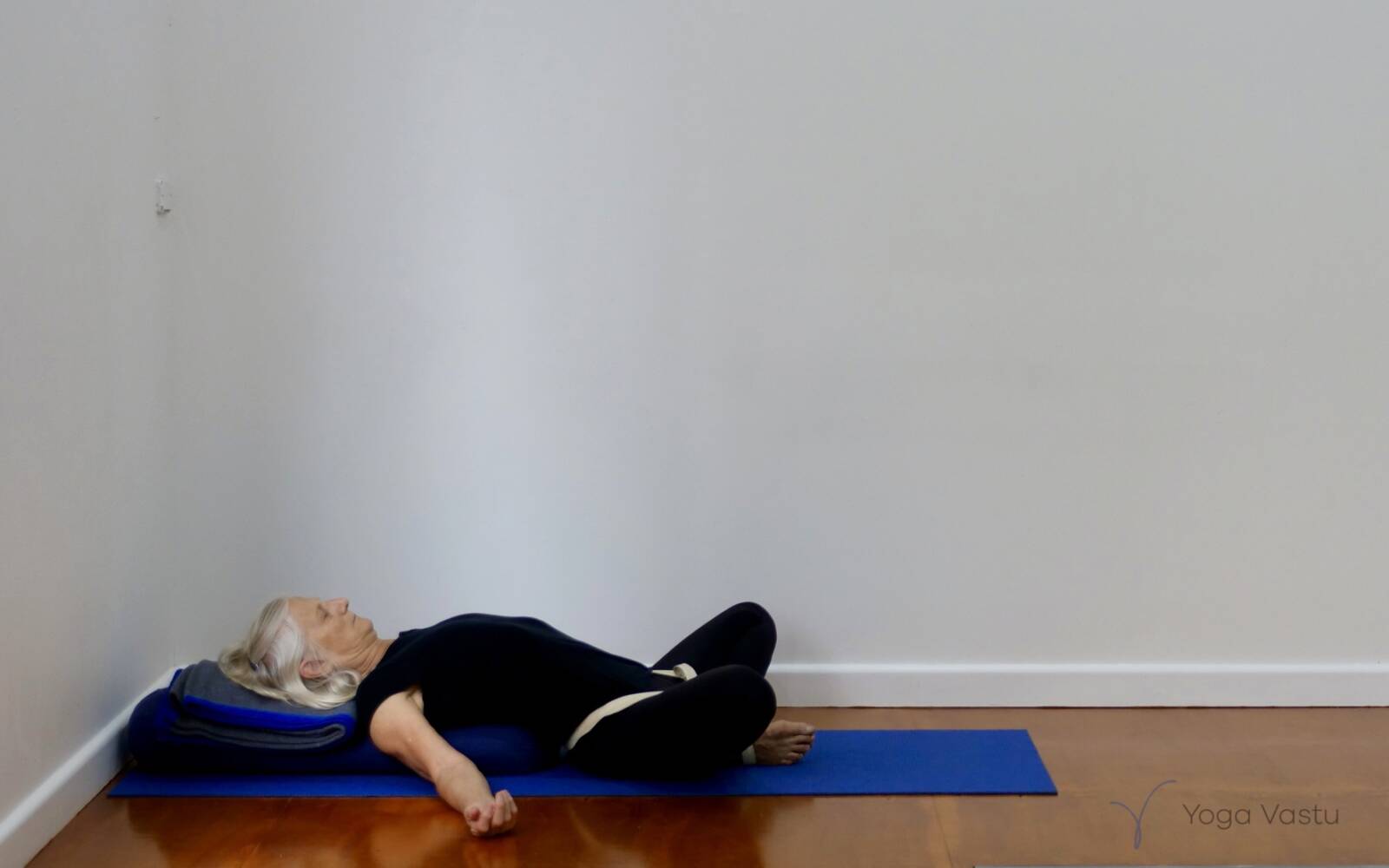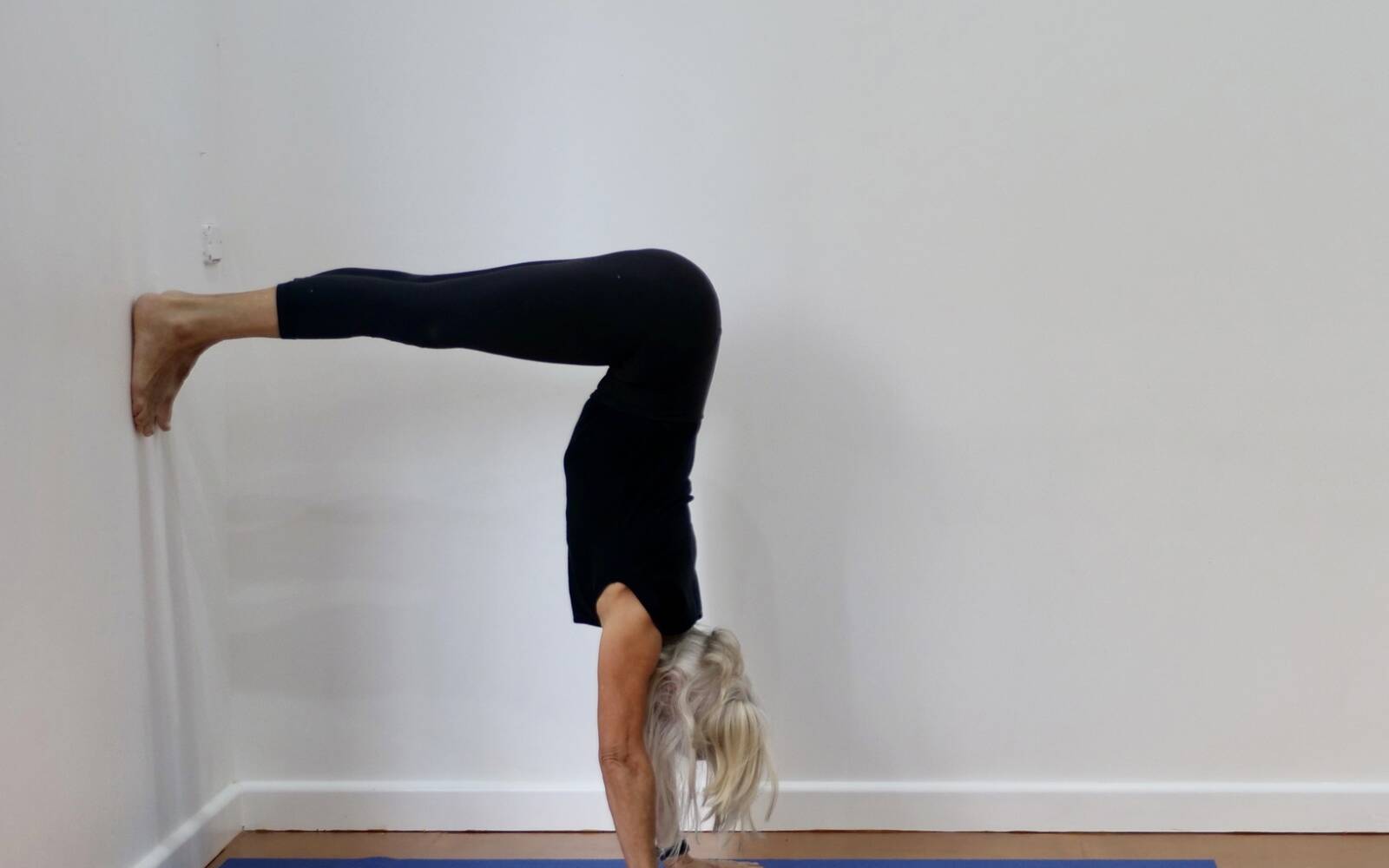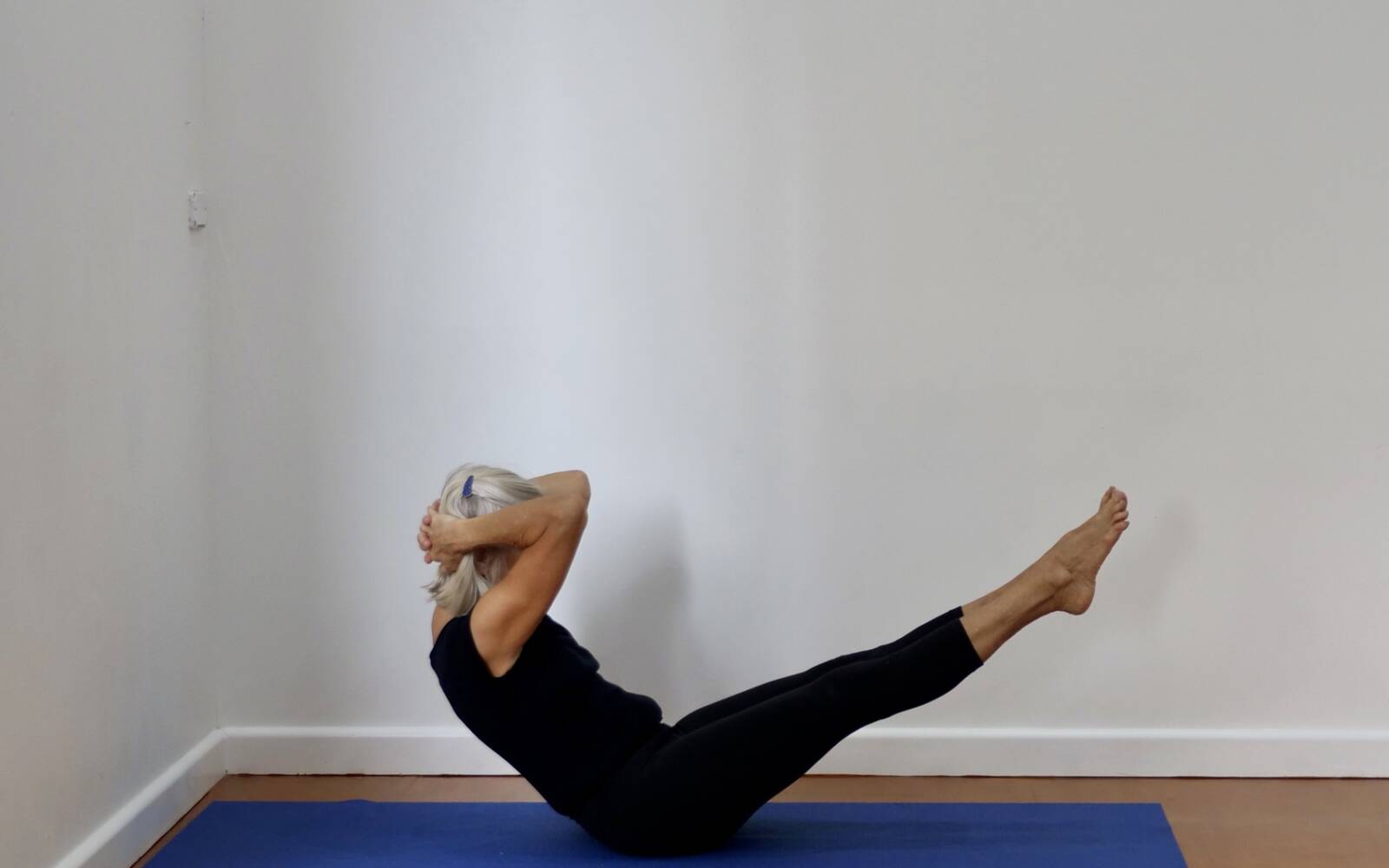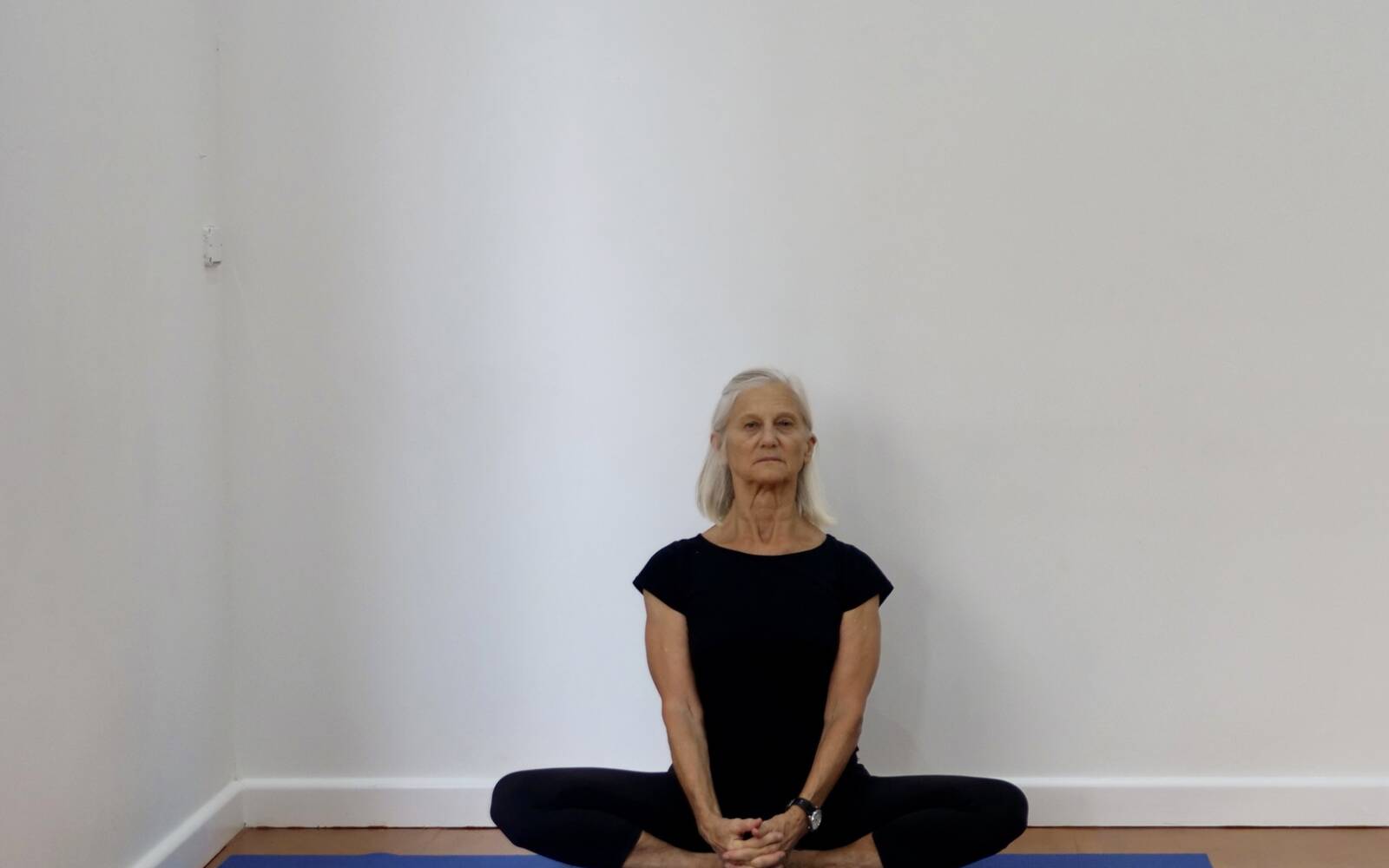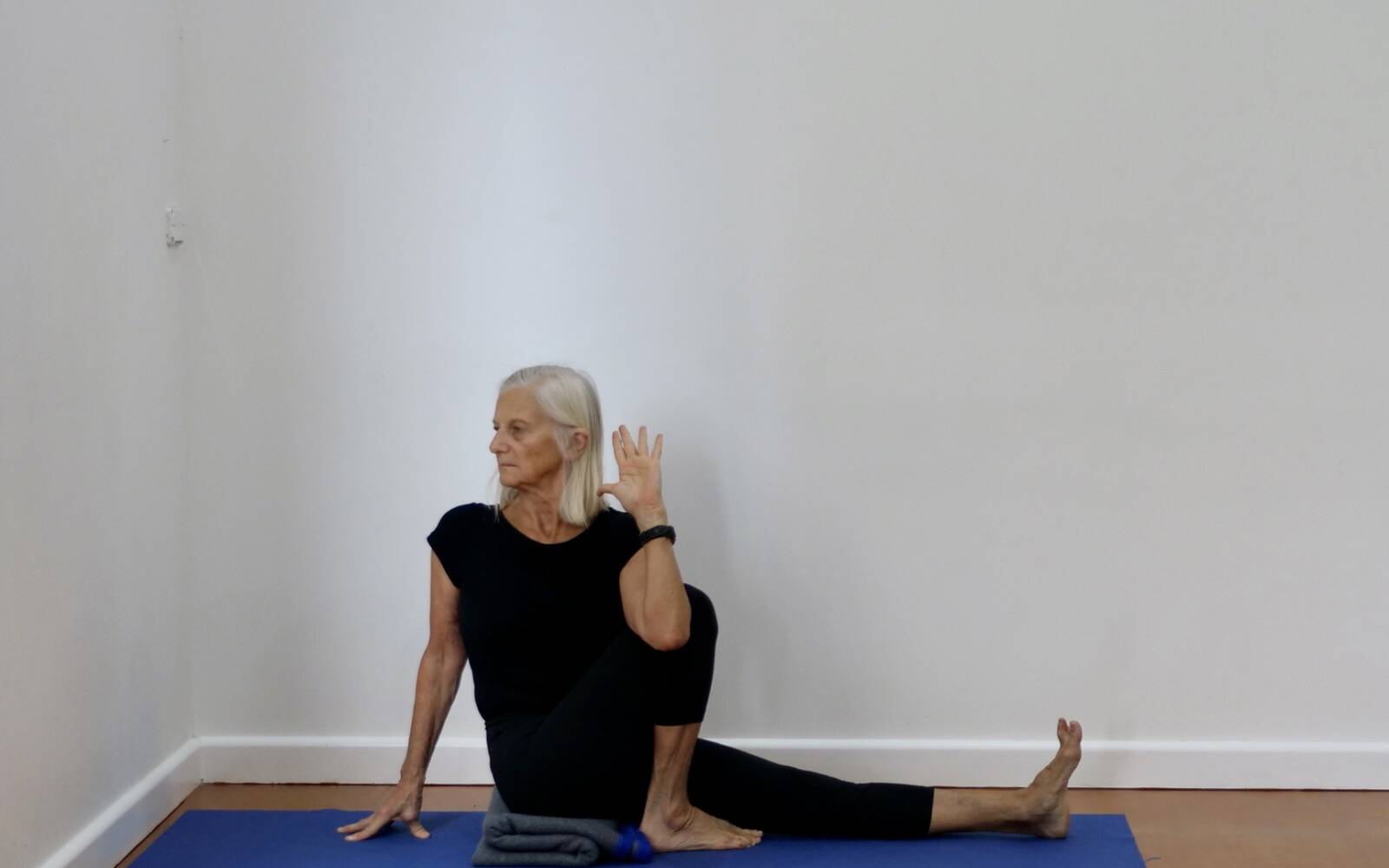This session contains poses and actions that are beneficial for our overall well-being. Functional abdominal muscles help to protect the lower back. Twists can release upper and lower back tightness, as well as bring circulation and life to the lower abdominal organs.
Set up in Supta Baddha Konasana, with a bolster for the back of the body, a folded blanket for the head and a belt for the legs. Stay for 3-5 minutes.
Come up to forward Virasana, resting the forehead onto the bolster to quieten the eyes and the face while extending and releasing the spine with the arms extended forwards.
Stand for Uttanasana, with the feet hip-width apart and a lengthways block high up between the thighs. This helps to bring evenness to the two sides of the pelvis and to activate the inner legs.
Adho Mukha Svanasana (Downward facing Dog pose) keeping the brick between the upper thighs. Feel the stability that is created in the pelvis, lower back and legs this way.
Now compare this Dog Pose to where you step the feet up onto two blocks placed lengthways to the wall. Start with the heels up the wall, balls of the feet on the blocks, and then slide the heels down the wall to or towards the blocks. Observe how having the heels up lifts the hips higher, and keeping the heels down gives more stability through into the pelvis as the legs are drawn backwards.
Come to standing for Utkatasana (Chair Pose) with the back of the pelvis placed against the wall, feet hip-width apart and one foot or so away from the wall. Extend the arms up. Here the front and back of the pelvis work against each other, establishing that connection as we go into the next few poses.
Prepare for Full Arm Balance, walking the feet up the wall till they are in line with the hips. Here the connection between the legs and the pelvis becomes more apparent.
Headstand preparation, with the feet up against the wall to help give support for the legs. Then turn the other way, hands to the wall, and with hips lifted extend one leg at a time up and back, keeping the two hips even.
We are now ready for some basic abdominal work.
Lie on your back, with arms extended straight behind you. Raise the Right leg and Right arm up to meet, and Left hand to your Left thigh. Change. Start to go more quickly, finding a rhythm as raise one leg and the arms up, keeping the buttocks glued to the floor.
Bring the arms down by your side and go to Urdhva Prasarita Padasana, legs at 90 degrees with the arms by your side, palms down. Press the back pelvis into the floor as you keep the legs extending up. Feel the warmth that comes to the lower abdominal area.
Urdhva Prasarita Padasana, going up and down on the breath, exhale down and inhale up, 8-10 times. Buttocks steady to the floor throughout.
Sit in Virasana and lift the spine and open the side chest by raising the arms up into Parvatasana. Change the interlock.
Extend the legs forward and then go to Ubhaya Padangusthasana, holding the big toes or using a belt. Lift the sternum and keep the back ribs in.
Follow with the first of the boat poses, Paripurna Navasana. This is sometimes called the V-pose as you can see from its shape. Take the heels to the wall if you are not ready for the full pose yet.
Ardha Navasana, more like a 30-degree angle, which works a different area of the abdomen. Here the back is a little more curved, and the eyes and the ankles are at the same height.
Baddha Konasana with the hands facing backwards behind the buttocks to release the abdominal region and create a spreading feeling after the contraction of the muscles. Lift the spine tall to release the legs more.
Sit on a 3 fold blanket for a more classical Baddha Konasana, holding the feet with the hands.
Then go to a Baddha Konasana twist, where the lower back remains broader and the turn is felt more in the muscles of the back and the shoulders.
Spread the legs out into Upavistha Konasana, upright and then Parsva Upavisthakonasana, to the side. Here we create a twist that starts more in the pelvis, as the Left hip bone turns towards the Right leg. Change.
We can start to feel the action that comes in the lower abdominal area. Each twist works a little differently. Observe the difference.
Bharadvajasana, open twist. Have support as needed for the outer buttock of the Right side when turning to the Right. Use a block behind you for your back hand if you need more lift to the spine. Change sides.
Now go to the full pose to the Right, where the Right hand holds above the Left elbow, and the Left hand goes to the outer Right leg or knee. Feel the release that comes to the neck and shoulders when you clasp this way. Change.
Last twist, Marichyasana 3. Not to be practised during the Menstrual cycle. Go to the open version instead.
Sit on a blanket in Dandasana, and bend the Right leg to bring the heel towards the inner Right buttock bone. Take the Left shoulder across the Right knee and turn the abdomen from Left to Right in this closed twist. Feel what is different compared to an open twist. Change sides.
Set up for Setu Bandha Sarvangasana, lying back over a lengthways bolster with a half-folded blanket on top and another blanket for the back of the head.
Lie back, with feet to the wall, hip width and hip height. This will release the lower abdominal area by creating length from the pubis to the sternum and width across the diaphragm region. This pose will help to remove any residual hardness in the abdomen.
Bring the legs to simple cross legs, and then after a minute or two, slide the buttocks back to the floor and change the cross leg.
Remain here for a cross-leg Savasana, letting the body, the face, the eyes and the breath settle into softness and neutrality.
Video stills from this sequence
